想要趁着周末或公共假期在国内旅游, 但只能想到槟城极乐寺、 吉隆坡双峰塔、 热浪岛, 又觉得这些地方太主流、 人又多、 而且没新鲜感了吗? 今天,小编就要来向大家介绍一些马来西亚可媲美国外、 鲜为人知的冷门景点吧·!
A Malaysian Guide to Budget Travel in China

Planning a trip to China from Malaysia on a budget? With the right strategies, you can explore China's rich culture, stunning landscapes, and vibrant cities without breaking the bank. Here's a comprehensive guide, with some of my travel tips, to help you make the most of your journey!
Before that, why not read about the tips and things to know before flying to China as a Malaysian?
Getting There: Affordable Flights from Malaysia to China
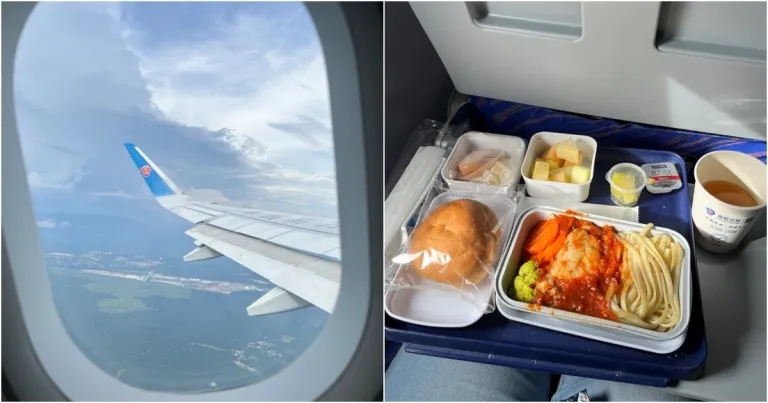
Several airlines offer direct flights from Kuala Lumpur, Sabah, and Penang to major Chinese cities like Beijing, Shanghai, and Guangzhou. Flight durations typically range from 4 to 6.5 hours. To secure the best deals, consider booking during off-peak seasons or using fare comparison websites.
I managed to snag a deal for my flight from KL to Guangzhou for under RM800, and it was with a full-service airline, China Southern Airlines! The experience was smooth, with excellent service and in-flight meals included. If you don’t mind a short transit, there are even more options available at budget-friendly prices.
Budget-Friendly Accommodations in China
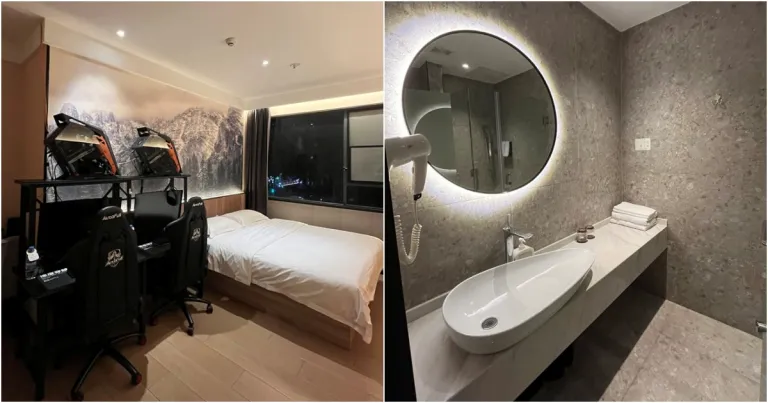
Accommodation in China can be surprisingly affordable, especially for Malaysians travelling on a budget. Whether you're backpacking through smaller cities or exploring major metropolises like Shanghai or Beijing, there are plenty of clean, comfortable, and reasonably priced options available.
Hostels and guesthouses are ideal for budget-conscious travellers, with prices typically starting from ¥100 to ¥200 per night (around RM65 to RM130). These often include basic amenities and are great for meeting fellow travellers. If you prefer a little more privacy, budget hotel chains such as 7 Days Inn or Jinjiang Inn offer rooms in the ¥200–¥300 range (RM130 to RM195), often with en-suite bathrooms and convenient locations.
If you’re travelling with friends or don’t mind sharing a room, your accommodation budget can stretch even further, making your trip even more cost-effective!
Navigating China on a Budget
Local Metro Systems
Getting around China on a budget is both easy and efficient thanks to its well-developed transportation system. Major cities like Beijing, Shanghai, Chengdu, and Guangzhou boast extensive metro networks, with fares starting from as low as ¥2 (around RM1.30). These systems are reliable, punctual, and an excellent way to avoid traffic congestion while exploring urban areas.
High-speed Rail (HSR)
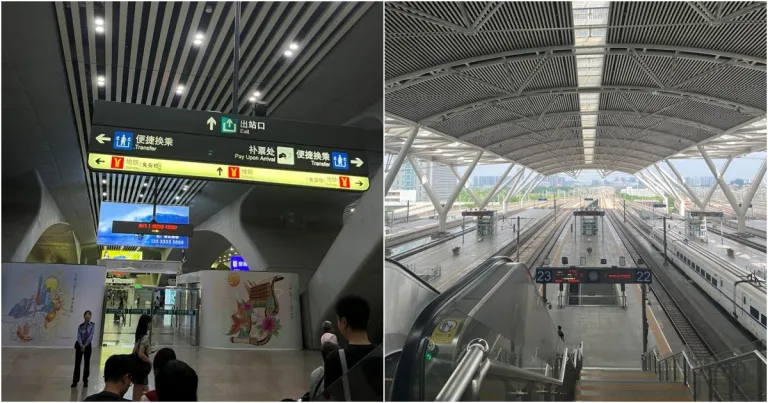
For intercity travel, China’s high-speed rail (HSR) system is one of the best in the world. Not only is it fast and comfortable, but it’s also affordable, especially when you book your tickets in advance. Sometimes, even travel platforms such as Klook or Trip.com offer slight discounts for high-speed rail tickets!
Whether you're planning a short hop between cities or a longer journey across provinces, the train system is an economical and scenic option. For my previous trip to China, I explored three different cities with the HSR in only seven days!
Didi Taxi
Within cities, ride-hailing apps like Didi (China’s equivalent of Grab) offer a convenient and reasonably priced alternative to taxis. They're especially useful when travelling late at night or when public transport isn't readily available.
I personally recommend using Didi Taxi for your trip to China, especially if you're travelling with one or more friends, as the shared cost might be cheaper than taking the local train sometimes! For solo travellers, opting for shared rides can save even more money while still getting you where you need to go comfortably.
Managing Payments and Staying Connected
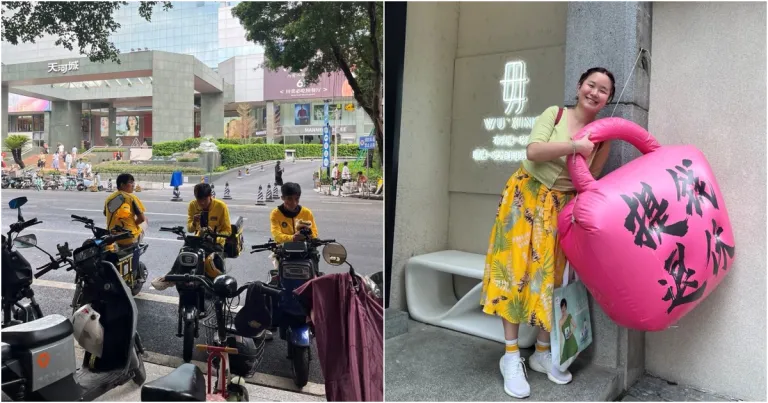
Staying connected in China is relatively straightforward, especially given the country's advanced digital infrastructure. One of the most convenient aspects for travellers is the widespread use of mobile payment platforms. Apps like Alipay and WeChat Pay are accepted virtually everywhere, from street food stalls and convenience stores to high-end restaurants.
The good news for Malaysian travellers is that both apps now allow tourists to link international credit or debit cards, making transactions seamless without the need to carry large amounts of cash. You can even use the Touch' N Go app to pay, but the rates will be slightly higher.
Food in China: Eating Well Without Overspending
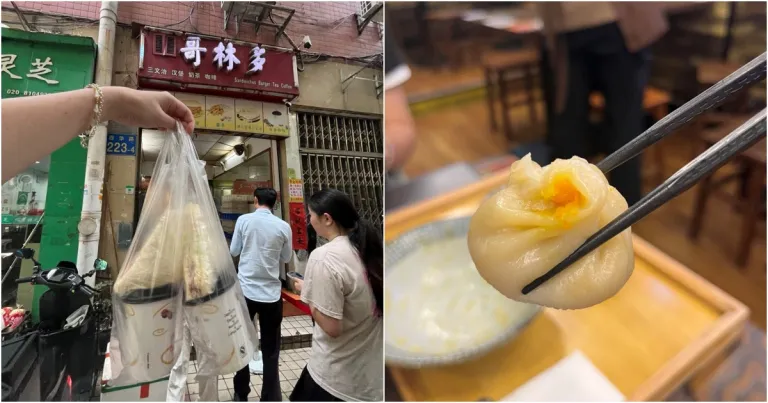
Eating well in China doesn’t require a big budget, thanks to its incredibly diverse and affordable cuisine. Street food is a staple of daily life, and you can enjoy popular snacks like dumplings, hand-pulled noodles, and grilled skewers for as little as ¥5 to ¥15 (around RM3 to RM10).
For something more substantial, local eateries serve hearty meals for ¥20 to ¥50 (RM13 to RM33), offering generous portions and authentic flavours. Each region also boasts its own specialities, from spicy Chongqing hotpot to delicate Cantonese dim sum, so don’t hesitate to explore and taste what makes every part of China unique.
Estimated Daily Budget in China
Accommodation: RM65 to RM195
Food: RM20 to RM50
Transportation: RM10 to RM30
Attractions: RM20 to RM60
Total spending in China without considering flight tickets and additional shopping is estimated to be approximately RM115 to RM335 per day, depending on personal preferences and spending habits.
Also read: A Malaysian Guide to Budget Travel in South Korea
With careful planning, a total budget of around RM3,000 to RM4,000 can easily cover a fulfilling 5D4N trip to China. Keep in mind, though, that certain cities like Shanghai or northern destinations such as Harbin may be slightly more expensive.
Regardless, I hope these tips help you plan your own budget-friendly China adventure soon!
All images are credited to Cecelia Chang
Published on
About Author
Cecelia Chang
RECOMMENDED READS
本地旅游好好玩! 马来西亚 10个 2025 必游的仙境 【Pulau Langkawi爆红住宿TOP 8】超高颜值的酒店,照片请来一波! 9月16日。。。约吗?
【亚洲跨年烟花TOP 8】带上家人和另一半欣赏爆炸式的浪漫! 每年的跨年大集会, 除了有歌舞升平的好气象之外, 还会有各种烟花大会, 迎接2020的到来~ 为你推荐这些超吸睛的烟火会, 还不赶快带上你最亲爱的去欣赏这份免费的浪漫情怀?!
【冬季篇】日本必去打卡的秘境TOP 10✅ 日本, 是亚洲一个神奇的旅游胜地。 但凡去过一次, 就会上瘾, 然后就会想要探索那里的春夏秋冬。 日本的冬季, 可以达到零下的温度, 甚至有很多越冷越受欢迎的景点。值得一提的是, 日本的冬季集浪漫、 萧条、 迷人为一身。 你也可以趁着冬季来到北海道滑雪, 或是泡一个美美的温泉! 无以伦比的旅行就此开始。
【学生党付得起的价位】新加坡超美味的豪华美食清单TOP 8! 以前总听别人说新加坡的食物不好吃, 那是因为不会吃吧! ~当然, 要享受到顶级的服务和美食, 钱包就一定不能太省啦! 毕竟马币兑新币汇率真的太高了。 不过, 为了吃真的不能省。 如果接下来想逗女朋友开心, 或是想慰劳一下家人, 就去邻国趴趴走吧!
RECENT ARTICLES
Da Nang and Hoi An: Why Central Vietnam Is the Best Destination for Malaysians Da Nang and Hoi An: Vietnam’s Top Destination for Malaysians
Hiking in Klang Valley: 8 Beginner-Friendly Hills with Great Views A guide to eight beginner-friendly hills in the Klang Valley.
普吉岛自由行行程:大马人必做的 10 件事,悬崖咖啡馆、泰式按摩与周日夜市! 普吉岛不得不体验的事项!
全球十大最富裕国家出炉,新加坡荣登榜首! 看看还有哪些国家进入前十!
2026 最适合带爸妈与长辈一起旅行的国家指南 2026 年最适合大马家庭带长辈出游的国家指南

